林榮峰 | Emily Lee
耕耘-挖寶
「吞天之氣,接地之力,壽人以柔」
—— 鄭曼青 國學大師
1966年,我有幸參加在中山堂舉辦的第一屆留學生講習會,場面隆重,主講者皆為當時政壇的重要人物:李國鼎、程天放、孫運璿……他們熱情分享早年留學的點滴:如何自己剪頭髮、下廚做飯,還有面對異地生活的各種挑戰。
這場講習充滿誠意,也顯示政府對留學生的重視。當時國人出國機會極其稀少,這樣的安排實屬德政,至今仍心懷感激。
講習結束時,一張桌子上為每位學員準備了一份結業資料;但在另一張桌子上,我卻找不到自己的名字。後來才得知,那份「特別資料」是為黨員準備的,內容是如何在海外觀察並回報同儕的言行。這樣的內部運作,也確實存在於當時的校園中。那是我第一次深切體會到,作為「非黨籍的台灣人」,原來這也是一種「身份上的不幸」。
1979年,外子選擇在台灣大學度過他的休假年,擔任心理系客座教授。我們全家搬入位於辛亥路的台大外籍教師宿舍。
起初分配到的舊宿舍,已多年無人居住。據說曾是某位反共大老的住所,雖人已作古多年,女兒旅居海外,房子也就荒廢。屋內家具破舊,門窗殘破,夜晚老鼠橫行,令人膽寒。
那時兩個孩子才八歲與六歲,夜裡害怕得無法入眠。我買了一塊九尺乘十二尺的地毯鋪在客廳,孩子整天坐在上面活動,拒絕去上學,滿身蚊子咬痕,女兒的眼睛常腫得像個小球。
眼見孩子適應困難,外子一度決定中止休假返回美國。台大心理系得知後極為重視,立即出面協調,認為不能失去這位重量級教授。幾經努力,學校終於同意讓我們搬進一間較新的宿舍——足足有六十幾坪、四個臥室,條件大為改善。孩子們也去附近的美國學校參觀,發現老師多來自加州,才終於願意上學。
孩子上學後,我開始參加「僑光堂」外僑服務中心的課程:吳國忠的太極拳、梁丹丰的國畫課、李老師的書法班。外子則清晨由同事騎摩托車載他,前往另一位老師那裡學拳。
當時政局動盪——美麗島事件發生不久,緊接著又傳出台大陳文成事件。剛好我們宿舍對面就是數學系教授宿舍,整排人家都愁雲慘霧,政治氣氛撲朔迷離。
但我們選擇靜下來,把心力投注於太極與氣功的學習。外子拜入吳國忠先生(鄭曼青大師傳人)弟子——陳取寬師父門下。為了安全與方便,我們邀請老師住進宿舍,把客廳改為教室,邀請朋友一起來學拳。
我準備茶點、當個好女主人,也日日練拳,努力學好。
一年很快過去,但我們全家都依依不捨。外子說:「我想回去,再回來。」我心想,那就何不乾脆不回去?於是我們決定再多留一年,留職停薪。
要學好入了門的鄭子太極拳與左家內功需要五年,我們立下目標:這兩年要打下好基礎,回美後再慢慢完成剩下的功課。一旦決定,心裡就踏實了。
孩子們也非常開心。他們已能流利說國語,便決定轉學至台大旁的銘傳國小:哥哥升五年級,妹妹讀二年級。
太極拳蘊含著中國傳統文化的核心精神。我們這兩年的生活,就如同畫中的農夫:日復一日,默默耕耘,細細挖寶;往下紮根,也往內沉潛。我們漸漸體會到——身體是一個小宇宙,若能與天地相通,就能汲取宇宙的能量。學會太極後,一切漸漸清晰。
正如鄭曼青大師所說:
「吞天之氣,接地之力,壽人以柔。」
這段「挖寶」的歲月,每一天都在細細數算中度過;兩年下來,收穫滿滿,滿懷感恩。
Cultivation & Treasure Hunting
“Breathe in the essence of heaven, draw strength from the earth, and pass on gentleness to others.”
— Grandmaster Cheng Man-ch’ing
In 1966, I had the privilege of attending the very first seminar for overseas students held at the historic Zhongshan Hall in Taipei. The event was grand and formal, with keynote speeches delivered by prominent political figures such as K.T. Li, T.F. Cheng, and Y.S. Sun. They spoke with warmth and humor, sharing stories of their early years studying abroad—cutting their own hair, cooking their own meals, and facing the many challenges of living in a foreign land.
The entire seminar was filled with sincerity and reflected the government’s emphasis on nurturing overseas students. At the time, very few Taiwanese had the chance to go abroad, so such a gathering was a rare and generous gesture—one I remain grateful for even today.
As the event concluded, a table was set with completion packets for each participant. However, on a nearby table, I couldn’t find my name. I later learned that those “special packets” were intended only for party members, containing instructions on how to discreetly monitor fellow students and report back on their activities. This was my first awakening to an unfortunate reality: that simply being a non-party-affiliated Taiwanese could itself be a kind of political liability.
In 1979, my husband took a sabbatical year in Taiwan and was invited to serve as a visiting professor in the Department of Psychology at National Taiwan University (NTU). Our family moved into NTU’s foreign faculty housing on Xinhai Road.
At first, we were assigned an old, long-abandoned dormitory, said to have once belonged to a high-ranking anti-communist figure of the Kuomintang. Though he had long passed away and his daughter now lived overseas, the house remained neglected. The furniture was dilapidated, the windows broken, and rats roamed freely at night. It was unsettling.
Our two children, then only six and eight years old, were terrified and could hardly sleep. I laid down a 9-by-12-foot carpet in the living room to give them a safe space to play, but they refused to attend school. Their bodies were covered in mosquito bites, and my daughter’s eyes were constantly swollen from the itching.
Seeing our children in such distress, my husband considered cutting the sabbatical short and returning to the U.S. NTU’s psychology department, upon hearing this, took the matter very seriously. They immediately negotiated with the university’s administrative office, emphasizing the importance of retaining such a valued professor. After some effort, we were granted a much newer, more spacious unit—over 2,000 square feet with four bedrooms. Conditions improved dramatically.
The children were taken to visit the nearby American school, where they discovered that many of the teachers were from California. This reassured them, and they finally agreed to go back to school.
With the children settled, I began taking classes at the Overseas Community Service Center: Tai Chi with Mr. Kuo-Chung Wu, Chinese brush painting with Ms. Liang Dan-Feng, and calligraphy with Professor Lee. My husband, meanwhile, woke up early each day and was picked up by a colleague on a scooter to study Tai Chi with another teacher.
The political climate in Taiwan was tense at the time. The Kaohsiung Incident had just occurred, and soon after, we heard of the tragic death of Chen Wen-Cheng, a professor who mysteriously fell to his death on NTU’s campus. Our dormitory was directly across from the mathematics faculty housing, and the whole neighborhood was filled with an air of fear and uncertainty.
In the midst of this, we chose to live quietly and intentionally. We focused our energy on the practice of Tai Chi and Qigong. My husband became a disciple of Master Chen Ch’ü-Kuan, a student in the lineage of Cheng Man-ch’ing through Mr. Wu. For safety and convenience, we invited Master Chen to live with us. We transformed our living room into a classroom and welcomed friends to join the sessions.
I prepared tea and snacks, served as a gracious hostess, and practiced daily alongside the group—determined to learn the art well.
The sabbatical year flew by. Yet none of us wanted to leave. My husband said, “I want to go back… and then come back again.” I thought, why not just stay? So, we applied for one more year of leave without pay—and it was granted.
It is often said that it takes five years to truly learn Tai Chi. I set a clear goal for myself: to build a solid foundation in two years, then continue my practice gradually upon returning to the U.S. Once the decision was made, I felt a deep sense of peace.
The children were equally joyful. By now they were fluent in Mandarin, and we enrolled them in Ming Chuan Elementary School, just across from NTU—our son entering fifth grade, our daughter in second.
Tai Chi embodies the very core of traditional Chinese philosophy and cultural spirit. Over those two years, our life resembled the farmer depicted in my painting: sowing seeds day after day, digging patiently for treasure, rooting downward while exploring inward.
We began to understand that the human body is its own small universe. And when we learn how to connect it to the vast energy of the greater cosmos, everything aligns. Through Tai Chi, we found the answers we didn’t even know we were looking for.
As Grandmaster Cheng Man-ch’ing said:
“Breathe in the essence of heaven, draw strength from the earth, and pass on gentleness to others.”
These were our years of treasure hunting—and every day was carefully counted and deeply cherished. After two years, we left with full hearts and lifelong gratitude.

